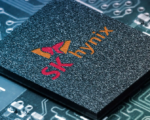European investors, while optimistic about the potential of generative AI to boost productivity and profits, are growing impatient with companies that have yet to show tangible returns on their significant investments in the technology. Many are becoming more selective, shifting focus from hardware suppliers to firms that are adopting AI solutions, such as RELX and SAP. However, the pressure is mounting for these adopters to demonstrate clear financial gains from their AI investments by next year.
The AI Boom and Shifting Investor Preferences
AI-exposed stocks, which had enjoyed a surge of interest, have been under pressure recently, particularly due to fears of a recession and the rise of low-cost Chinese AI models, such as DeepSeek. Despite the broader market challenges, Nvidia, a key player in the AI space, has seen a 29% increase in its stock price year-over-year, even amid the rollout of DeepSeek, which reduces reliance on expensive chips like Nvidia’s.
In Europe, the trend is evident as investors move away from hardware makers, with stocks like ASM International and BE Semiconductor down 25% and 20%, respectively, since the January sell-off. On the other hand, companies adopting AI, such as LSEG and SAP, have shown more resilience, with only modest declines in their stock prices.
Investor Patience Running Thin
Despite the growing interest in AI, an internal survey by Fidelity in January revealed that 72% of analysts did not expect AI to significantly impact the profitability of the companies they cover by 2025. Many European portfolio managers are adopting a shorter timeframe, warning that companies need to start delivering visible results by 2026 to justify their AI investments.
Steve Wreford, lead portfolio manager at Lazard Asset Management, emphasized that investors will be more forgiving of AI adopters in 2025, when many companies are still in the beta testing phase. However, by 2026, these companies must show a significant impact on their revenues, or investors will begin to lose patience.
The Risk of Overhyped Expectations
The current high valuations of AI-exposed stocks, including SAP and LSEG, which trade at significantly higher price-to-earnings multiples compared to the broader market, only add to the pressure. Analysts like Bernie Ahkong of UBS O’Connor warn that investors will begin questioning these premiums if substantial returns are not seen by the end of 2025.
One of the key concerns in AI investments, as noted by Paddy Flood of Schroders, is whether viable, profitable use cases for AI will emerge. To sustain investment in the sector, concrete applications of AI must be developed—whether in the form of a single “killer” use case or multiple impactful ones. Fabio di Giansante of Amundi, Europe’s largest asset manager, echoed this sentiment, stressing that AI companies need to demonstrate real benefits in terms of top-line growth and margin improvement.
Looking Ahead
With AI stocks trading at premium valuations, 2025 could be a pivotal year. If companies fail to show a tangible impact from their AI investments, it could prompt a reassessment of their valuations. As the market waits for concrete results, the pressure is on AI adopters to deliver on the high expectations that have been set.
















